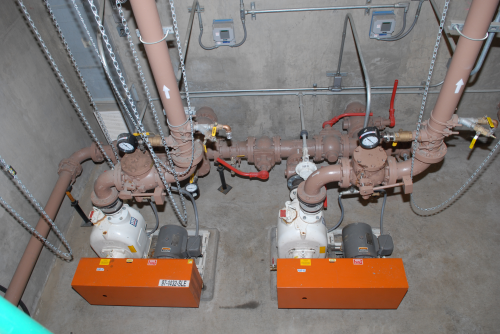
Winter Park, Colorado, USA is a prime location for winter weather fanatics. The city, located in the Rocky Mountains, occupies 7.5 square miles and provides visitors and residents with skiing, snowboarding, sledding and snowshoeing opportunities. In the summer, the city caters for hikers, mountain bikers and fishing enthusiasts.
The Winter Park Water & Sanitation District (WPWSD) provides water and sewer services for the Winter Park Ski Resort and a few additional resorts, a residential area just outside the resort and a handful of subdivisions in the surrounding area located in the upper half of the Frasier River Valley.
Coping with changes in usage
The area has seen tremendous growth throughout the last few years as corporations have created several large projects and multimillion-dollar homes in the subdivisions served by the water services. As a result, the resort area is frequently subject to dramatic changes in usage and need for water and sewer services
“Demand changes quickly over the course of a ski week,” said Mike Wageck, the district manager of WPWSD. “On a busy weekend, we will have 10,000 people in the skiing areas, even though the area contains fewer than 200 permanent residents. This causes frequent changes in the demands put on the wastewater pumps that serve our facility.”
Making the operation even more challenging is the fact that the city of Winter Park is located at an altitude of 9,000 ft – more than 1.7 miles above sea level. Suction head on an industrial wastewater pump derates at around 1 ft per 1000 ft of elevation. This meant that the team at WPWSD has been forced to be more creative in the way that they position the pumps in their facility in order to achieve the required power to service the plant.
The problem of elevation
The elevation of the plant posed significant challenges to the line of pumps that was originally installed in the Winter Park facility. The pumps were in an above grade configuration with an excessive horizontal run of suction pipe. This setup led to countless operational issues. “At random times, the pumps in the facility would just stop working or they would lose their prime overnight,” says Wageck.
“When the initial pumps would lose their prime, it would take 8–12 minutes for them to reprime and become operational again,” said Gragg White, president of Canyon Systems, a Gorman-Ruppauthorized distributor which provides consultation, parts and service to the WPWSD plant. “The result of this was that the pumps were not properly returning wastewater sludge back to the head of the plant as intended – an issue that threatened to cause the entire pumping system to fail.”
These issues demanded immediate attention in order to maintain the operational efficiency needed to deal with ever-changing demands placed on the plant. Wageck and WPWSD worked with Canyon Systems on a solution for the problem. In the end, WPWSD and Canyon Systems decided that the best solution for the pumping issues was to replace the plant's pumps with Gorman-RuppT3 pumps.
The T3 pump design
The T3 pump incorporates a large volute design, allowing the technology to re-prime automatically in a completely open system – without the need for suction or discharge check valves and with the pump casing only partially filled with liquid and a completely dry suction line. It also features a two-vane, semi-open, solids-handling impeller which can accommodate small solids that enter the pump and a double-floating, self-aligning, oil-lubricated mechanical cartridge seal. The pump also incorporates a removable cover plate providing quick and easy access to the pump interior without disconnecting piping. Three of the self-priming, centrifugal pumps were installed at the WPWSW facility – one for each of the two basins and one to serve as a standby pump – allowing the facility to seamlessly pump a half million gallons of water per day.
On the additional recommendation of Canyon Systems, the Gorman-Rupppumps were installed below grade – creating flooded suction and eliminating the possibility of lost priming due to trapped air in the pumps' suction pipe.
Improved maintenance
Engineers also had to deal with standard pump maintenance at the plan. Part of that maintenance involves solids that pass through the pump. “Currently, the water in our system goes through a pre-treatment process that removes the majority of solids,” Wageck explains. “[…] From time to time, rags or string come down the line and can get built up inside.”
The technology is designed to allow for a quick fix in these type of situations. “What I appreciate most about the pumps is how easy they are to clean out,” said Wageck. “With the removable cover plate we can open the pump up, clean it out and get it back in operation in about twenty minutes.”





